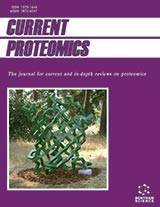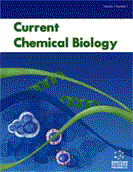Abstract
We present a review of the initiation of meiosis in budding yeast, Saccharomyces cerevisiae, specially focusing on the initiation stage before the commitment point. We discuss the molecular mechanisms involved in tight regulation of the initiation process using experimental facts and present a comprehensive discussion of the advantages and limitations of the available mathematical models on the meiosis initiation of budding yeast. We also succinctly review the biology of general meiosis initiation and the morphology of the modelling organism Saccharomyces cerevisiae which are helpful to understand the molecular mechanisms involved in context. While explaining the key molecular mechanisms, the available experimental literature and mathematical models open up emerging questions for future investigations. Although the complete molecular network and mechanisms of the meiosis initiation in budding yeast, which can be considered as the best understood meiosis modelling organism, are still not known, the current explanations can be beneficial for understanding key issues of the meiosis in multicellular organisms.
Keywords: Budding yeast, mitosis, mathematical models, nutrient dependence, Sporulation, Saccharomyces cerevisiae.
Graphical Abstract
Current Bioinformatics
Title:Regulation of Meiosis Initiation before the Commitment Point in Budding Yeast: A Review of Biology, Molecular Mechanisms and Related Mathematical Models
Volume: 10 Issue: 2
Author(s): Champi T. Wannige, Don Kulasiri and Sandhya Samarasinghe
Affiliation:
Keywords: Budding yeast, mitosis, mathematical models, nutrient dependence, Sporulation, Saccharomyces cerevisiae.
Abstract: We present a review of the initiation of meiosis in budding yeast, Saccharomyces cerevisiae, specially focusing on the initiation stage before the commitment point. We discuss the molecular mechanisms involved in tight regulation of the initiation process using experimental facts and present a comprehensive discussion of the advantages and limitations of the available mathematical models on the meiosis initiation of budding yeast. We also succinctly review the biology of general meiosis initiation and the morphology of the modelling organism Saccharomyces cerevisiae which are helpful to understand the molecular mechanisms involved in context. While explaining the key molecular mechanisms, the available experimental literature and mathematical models open up emerging questions for future investigations. Although the complete molecular network and mechanisms of the meiosis initiation in budding yeast, which can be considered as the best understood meiosis modelling organism, are still not known, the current explanations can be beneficial for understanding key issues of the meiosis in multicellular organisms.
Export Options
About this article
Cite this article as:
Wannige T. Champi, Kulasiri Don and Samarasinghe Sandhya, Regulation of Meiosis Initiation before the Commitment Point in Budding Yeast: A Review of Biology, Molecular Mechanisms and Related Mathematical Models, Current Bioinformatics 2015; 10 (2) . https://dx.doi.org/10.2174/157489361002150518150139
| DOI https://dx.doi.org/10.2174/157489361002150518150139 |
Print ISSN 1574-8936 |
| Publisher Name Bentham Science Publisher |
Online ISSN 2212-392X |
 18
18 1
1
- Author Guidelines
- Bentham Author Support Services (BASS)
- Graphical Abstracts
- Fabricating and Stating False Information
- Research Misconduct
- Post Publication Discussions and Corrections
- Publishing Ethics and Rectitude
- Increase Visibility of Your Article
- Archiving Policies
- Peer Review Workflow
- Order Your Article Before Print
- Promote Your Article
- Manuscript Transfer Facility
- Editorial Policies
- Allegations from Whistleblowers
Related Articles
-
The Urokinase Plasminogen Activator System: A Target for Anti-Cancer Therapy
Current Cancer Drug Targets Anticancer Metallotherapeutics in Preclinical Development
Current Medicinal Chemistry The Protective Roles and Molecular Mechanisms of Troxerutin (Vitamin P4) for the Treatment of Chronic Diseases: A Mechanistic Review
Current Neuropharmacology QSAR and Docking Studies of N-hydroxy Urea Derivatives as Flap Endonuclease-1 Inhibitors
Current Computer-Aided Drug Design Biochemical Markers of Autoimmune Diseases of the Nervous System
Current Pharmaceutical Design Molecular Genetics and Biomarkers of Polyglutamine Diseases
Current Molecular Medicine Anionic Antimicrobial Peptides from Eukaryotic Organisms
Current Protein & Peptide Science Estrogen, Neuroprotection and Neurogenesis after Ischemic Stroke
Current Drug Targets A Novel Approach to Anticancer Therapies: Peroxisome Proliferator Activator-Receptor-γ as a New Target Therapy in the Treatment of Human Urological Cancer
Endocrine, Metabolic & Immune Disorders - Drug Targets Recent Advances and Challenges in Steroid Metabolomics for Biomarker Discovery
Current Medicinal Chemistry Carbohydrate-Metal Complexes and their Potential as Anticancer Agents
Current Medicinal Chemistry Steroid Biosynthesis Inhibitors in the Therapy of Hypercortisolism: Theory and Practice
Current Medicinal Chemistry Cellular Relationships of Testicular Germ Cell Tumors Determined by Partial Canonical Correlation Analysis of Gene Expression Signatures
Current Bioinformatics From Protein to Peptides: a Spectrum of Non-Hydrolytic Functions of Acetylcholinesterase
Protein & Peptide Letters Seek and Destroy: The Use of Natural Compounds for Targeting the Molecular Roots of Cancer
Current Drug Targets New Features in the Treatment of Androgen-Independent Prostate Cancer
Current Pharmaceutical Design Applications of Indan-1,3-Dione in Heterocyclic Synthesis
Current Organic Synthesis Materials Degradation in PVC Medical Devices, DEHP Leaching and Neonatal Outcomes
Current Medicinal Chemistry Hypergonadotropic Hypogonadism: Management of Infertility
Current Pharmaceutical Design Cellular Functions of Vaults and their Involvement in Multidrug Resistance
Current Drug Targets

















.jpeg)








